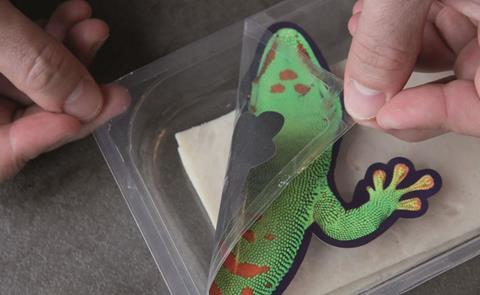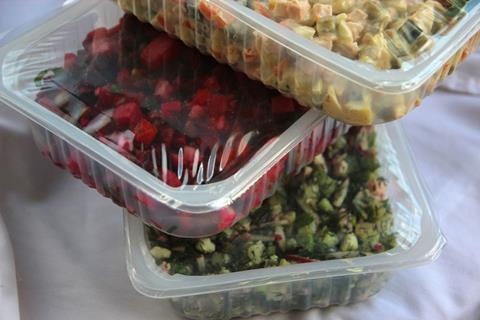
Adhesives are more or less invisible, but play an important part in quite literally holding packaging together. Elisabeth Skoda looks at the latest market developments and discusses recent trends with H.B. Fuller and Bostik.
According to a report by Mordor Intelligence, the global packaging adhesives market is expected to grow at with a CAGR greater than 5% between 2021 and 2026. This is mainly driven by growing demand from the food and beverage industry. Asia-Pacific accounted for the biggest market share and is likely to continue dominating demand.
Trends and developments in the packaging adhesives space
Mega trends like globalization, urbanization and digitalization have been impacting the way we live and work, and have challenged how products are designed, manufactured and consumed. With increasing consumer awareness, food safety concerns and product ingredient transparency, sustainability is here to stay.
“As part of this new reality, the main drivers we see in the food and beverage industry are firstly regulatory changes, primarily in Europe with the new Green Deal, ban on single-use plastics legislation and related guidelines impacting packaging; and secondly the impulse coming from brand owners themselves. In some cases, these are also heavily influenced by the consumers, putting pressure on brands via social media and through their purchasing choices,” explains Elizabeth Staab, Global Strategic marketing manager at H.B. Fuller.
She identifies that within the sustainability area, the biggest trend is the avoidance or reduction of plastic as a packaging material, forcing many food and beverage producers to seek mainly fibre-based alternatives, i.e. paper and board.
“These changes in packaging design and materials used lead to different adhesive requirements. The recyclability of the primary packaging material is essential, so adhesives need to be formulated to facilitate this recycling process. New materials such as paper straws or new designs such as multipack bundling, like KHS Nature MultiPackTM or GPI’s KeelClipTM, demand completely new solutions and developments to fulfil the requisites of the new packs,” adds Ms Staab.
Wladimir Moraes, Global Market Director for Flexible Packaging - Bostik Advanced Packaging, agrees that the push towards design for circularity and recyclability has further intensified.
“This key trend is shifting gears for all elements of packaging, including adhesives and sealants. Re-designing in mono-material structures to allow sorting and mechanical recycling remains an important driver for innovation and sustainability in flexible packaging. Therefore, there is a real need for adhesives that allow and even enable this. “
Adhesives can also play an important part in combatting food waste, as he points out.
“We have observed a growing demand for our adhesives and systems for reclosable packaging, to reduce food waste and preserve resources.”

An invisible force
All this shows that adhesives are a key element in packaging and its sustainability, even though they are naturally almost invisible to consumers.
Mr Moraes highlights the example of mechanical recycling of multi-layer flexible structures, where the right adhesive can provide safety for consumers and the required performance for food protection, while not impacting the quality of the recyclate.
“High recyclate quality is key to enable virgin material replacement and allow a high number of reuse cycles in a circular economy. Bostik offers a laminating adhesive that is fully certified by Recyclass for compliance with the polyethylene films recycling stream.”
There are numerous ways in which the choice of adhesive can impact the sustainability of packaging, as Ms Staab points out, and one of them is having more efficient adhesives that achieve the same effect using less.
“With faster production lines and less adhesive per pack or container, a lot can be achieved. For example, we apply the absolutely minimum necessary amount of adhesives needed to help create packaging that meets the ‘do more with less’ rule and consumes fewer resources.”
Some hot melt adhesives can be applied at lower temperatures, which is in turn saving energy in use. Also, adhesives facilitate the recycling of primary packaging material. For instance, wash-off properties for labelling glass or PET containers are crucial for returnable bottles or a cleaner PET recycling stream.
“Thus, the separation of adhesives from paper, carton board or corrugated is essential. For flexible packaging, various 2K laminating systems are certified for mechanical recycling to then use the regained plastics in other applications,” adds Ms Staab.
Reducing packaging
Furthermore, packaging design can be rethought to reduce the amount and type of materials used. Multipack bundling for beverages has proved this point, showing an overall reduction and eliminating plastic shrink wrap, she says.
“Primary packaging is important, but also pallet packaging to safely transport goods from the producer to the supermarket shelf. Here adhesives can add stability to the pallet, which can substantially reduce the amounts of shrink wrap and other tertiary / quaternary packaging used to ship goods.”
Mr Moraes agrees that adhesives can help to eliminate the need for plastic film wrapping used to stabilize goods on pallets, and outlines further solutions where adhesives help with reduction of packaging.
“Our reclosing solutions for lidding films allow replacement of clamshells by top-sealed trays, thus reducing weight of the plastic used by up to 20%. Our polyester sealing resins seal directly on mono-material PET trays, eliminating the need for a polyethylene layer, which also facilitates recycling. This also allows the use of adhesive weight: our Kizen technology has been designed to bond better with less quantity (-20% in average) and to create lighter packaging.”
Keeping consumers safe
A major challenge for adhesives in packaging has been to provide ever-higher consumer protection, required performance and convenience features, in the most cost-effective way.
“On top of this, adhesives face the common challenge of minimizing the environmental impact and enabling circularity. The main challenge for flexible packaging adhesives is not to adapt but rather to enable new packaging developments. At Bostik, we see partnership within the whole value chain as the only way to accomplish this, accelerating innovation and bringing coherent solutions to the market,” says Mr Moares.
“For example, Bostik’s laminating adhesive certified by Recyclass for recyclability in the PE flexibles stream addresses the need of our customers to develop recyclable packaging. Another innovation is a joint development with a customer in USA for a reclosable lidding film technology for fresh produce trays, that streamlines the process and replaces clamshells. This solution is being introduced in the marketplace now.”

Boosting the consumer’s e-commerce experience
E-commerce puts further challenges on packaging. Since a growing percentage of purchases arrive at the consumer’s doorstep, companies must ensure their e-commerce packaging protects the contents and their brand image, while providing an environmentally friendly way to dispose of the packaging waste. Retailers are looking at right sized packaging options, says Ms Staab.
“There are various solutions to enhance functionality of e-commerce packaging: right sizing of packaging, easy opening for the consumer and reclosure for return to the retailer are now near requirements in the industry. Adhesives offer several solutions for easy, quick closure at the warehouse for shipment.
At H.B. Fuller, we have customized products for closure and reclosure that also easily separate from the carton board or corrugated for optimal recycling of e-commerce packaging. Easy opening features generally use tear tapes. To date these have been plastic based, but our new Sesame Evolution tapes are fibre-based and replace the plastic tear tapes. This improves the customer experience two-fold: easy opening without the plastic tape.”
Application challenge: Compostability
Compostable packaging has experienced higher demand in recent years, and adhesives have to be carefully considered in order to work well with this type of packaging.
Industrial composting is carried out at 60°C over several months, requiring the application temperature of the adhesive as well as storage of the finished pack during hot summers to be well under this threshold so as not to inadvertently trigger the composting process.

“This means that completely new and different raw materials need to be used to make the laminating flexible packaging adhesive. It takes great effort and time to test the various raw materials and formulations with compostable testing standards work in 3-month, 6-month and yearlong intervals, which can add a lot of time to the development process. Working closely with a compostable film supplier, ink supplier and the brand owner we were able to develop a laminating adhesive for dry food packaging that is now commercial in the US,” says Ms Staab.
Application challenge: Paper straws
As mentioned before, paper straws have been a true challenge for the industry and consumer alike.
“For the consumer, the feel in their mouth is substantially different and no one appreciates a soggy straw in their beverage. Paper straws are produced with water-based adhesives that then must withstand liquids for several hours. Also, the straw needs to be sufficiently sturdy and stiff, so that it isn’t easily crushed and then cannot be used. In comparison a plastic straw has the advantage of withstanding greater forces and still returning to its initial shape.
In addition, the consumer puts the straw in their mouth to drink, so the regulatory food contact aspects are of key importance,” concludes Ms Staab.
“Our water-based R&D team worked closely with specialized paper and machine manufacturers to customize the formulation for high-speed paper straw production and the adhesive exceeds the consumer safety requirements and withstands liquids for several hours. Numerous hurdles were successfully overcome to offer a plastic-free alternative to plastic straws.”













No comments yet